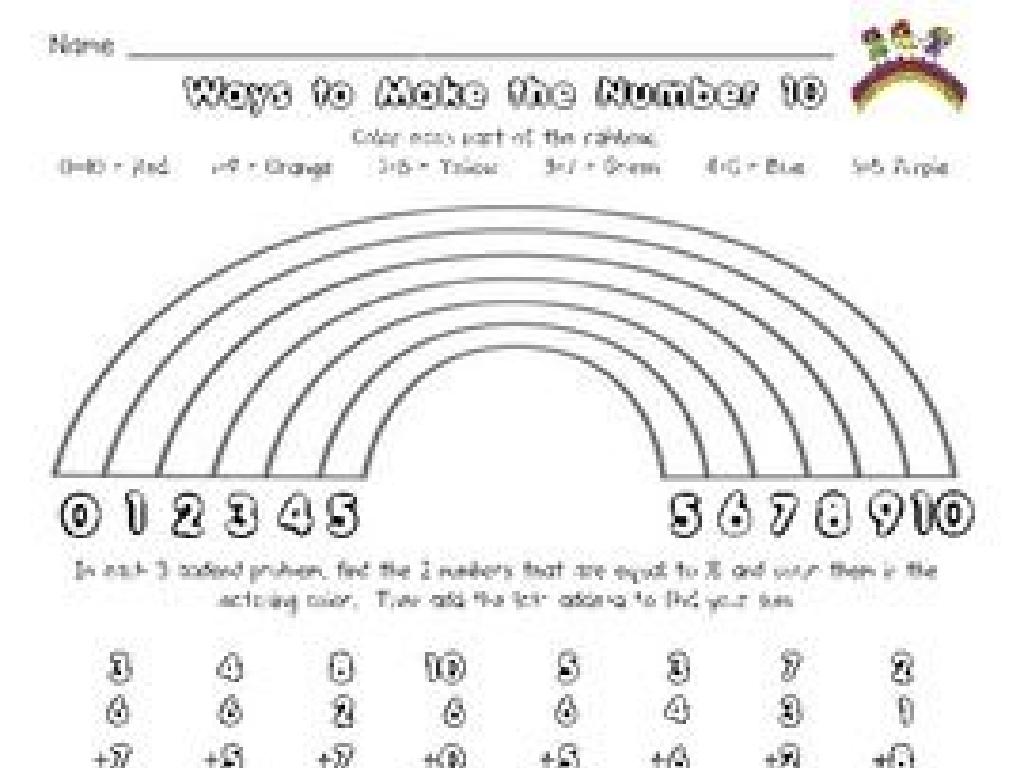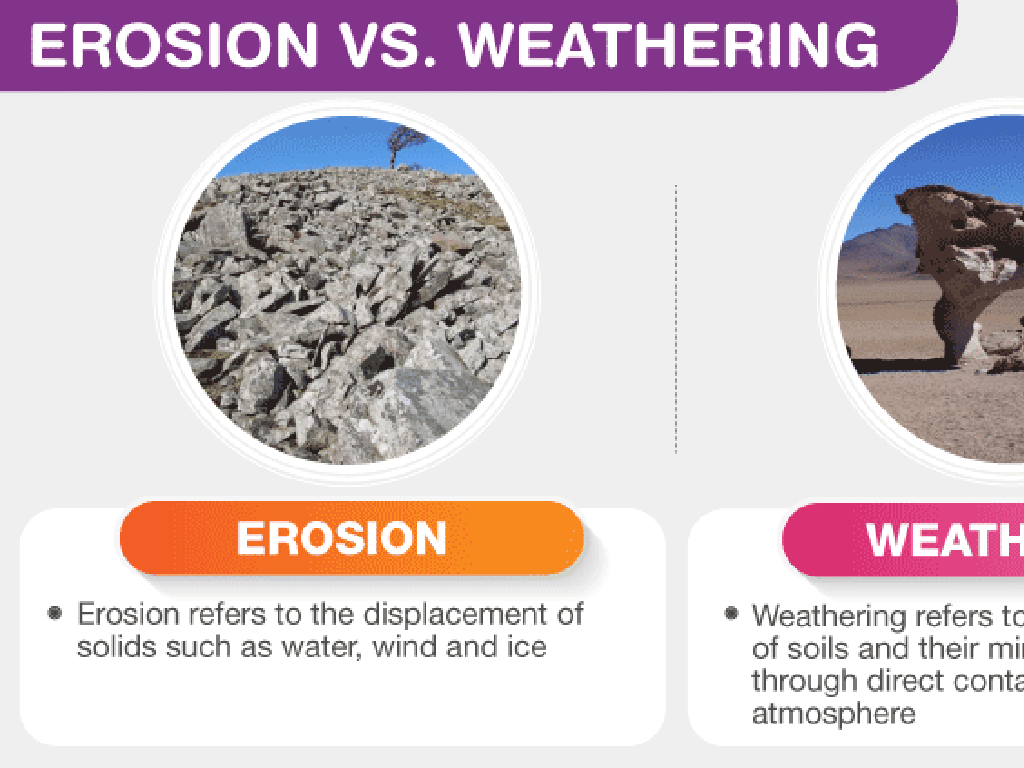The Articles Of Confederation
Subject: Social studies
Grade: Seventh grade
Topic: The Early Republic
Please LOG IN to download the presentation. Access is available to registered users only.
View More Content
Exploring The Articles of Confederation
– The Early Republic’s significance
– Post-Revolution, the need for unity and a national identity was crucial.
– Understanding the Articles of Confederation
– America’s first constitution, which governed the nation from 1781-1789.
– Learning objectives for today
– Engage with the nation’s first steps
– How did the Articles pave the way for the current Constitution?
|
This slide introduces students to the period following the American Revolution, emphasizing the importance of unity and the creation of a national identity. The Articles of Confederation, America’s first constitution, are presented as a foundational document that guided the fledgling nation. The learning objectives will focus on understanding the Articles’ role, strengths, and weaknesses, and their impact on the development of the U.S. Constitution. Encourage students to think critically about how the Articles addressed the challenges of the time and what lessons were learned that influenced the future of American governance.
Exploring The Articles of Confederation
– Definition of the Articles
– The Articles were the first governing document of the US, outlining the national government’s functions.
– America’s first constitution
– They served as the nation’s constitution from 1781 until the adoption of the current Constitution in 1789.
– Key features of the government
– It established a confederation of states with a weak central government and limited powers.
– The Articles’ role in history
– Understanding the Articles helps us see the foundation of American governance and its evolution.
|
This slide introduces the Articles of Confederation, the first constitution of the United States, which created a confederation of sovereign states with a weak central government. It’s crucial to highlight the purpose of the Articles, which was to coordinate efforts during the Revolutionary War and manage collective issues. Discuss the key features, such as the lack of a strong executive branch and the requirement for unanimous consent for amendments. Emphasize the historical context and significance, setting the stage for the development of the US Constitution. Encourage students to consider the challenges faced under the Articles and how they led to the Constitutional Convention.
Strengths and Weaknesses of The Articles of Confederation
– Key strengths of the Articles
– First governing document, established unity among states
– Challenges under the Articles
– Issues like lack of central power, no tax enforcement
– Weaknesses prompting change
– Inability to regulate trade or enforce laws
– Transition to the Constitution
– These flaws highlighted the need for a stronger federal government
|
This slide aims to provide students with a clear understanding of the Articles of Confederation’s role in American history. Emphasize that while the Articles established the first official framework for the United States government and symbolized unity, they had significant limitations. Discuss how the lack of a strong central authority, the inability to impose taxes, and the absence of a unified trade policy led to practical difficulties. Highlight that these weaknesses became so problematic that they ultimately necessitated the drafting of a new, more robust constitution. Encourage students to think critically about how the Articles of Confederation might apply to current discussions about state versus federal power.
Government Structure Under the Articles
– Congress: Unicameral legislature
– One-house body of delegates with limited powers
– No separate executive branch
– No separate judicial branch
– State representation and power
– Each state had one vote, regardless of size
|
This slide outlines the structure of government under the Articles of Confederation. Highlight the fact that there was only a unicameral legislature, meaning Congress was a single-chamber body without separate executive and judicial branches. Emphasize the limitations this placed on the central government. Discuss how each state had equal representation in Congress, with one vote per state, which gave smaller states the same power as larger ones. This can lead to a discussion on the challenges of such a system and set the stage for understanding why the Constitution was eventually drafted.
Ratification and Implementation of the Articles
– States’ ratification process
– Each state had to approve the Articles, a unanimous decision was required.
– Challenges faced in implementation
– Issues like lack of central power made governance difficult under the Articles.
– Articles’ role in Revolutionary War
– Served as the nation’s first constitution during the war, guiding the colonies.
– Impact on early American governance
|
This slide delves into the complexities surrounding the adoption and practical application of the Articles of Confederation. Highlight the requirement of all thirteen states needing to agree for ratification, which showcased the emphasis on state sovereignty. Discuss the significant challenges such as the weak federal government, which couldn’t enforce laws or collect taxes effectively. Explain the Articles’ crucial role during the Revolutionary War, acting as a unifying framework for the colonies. However, also note the limitations that led to the eventual need for a stronger federal government, setting the stage for the creation of the U.S. Constitution.
Case Study: The Land Ordinance of 1785
– Introduction to Land Ordinance 1785
– First federal land sale law, structured settlement
– Organizing the Western lands
– Divided land into townships for sale and development
– Impact on westward expansion
– Accelerated settlement, shaped future states
|
The Land Ordinance of 1785 was a pivotal law passed by the United States Congress under the Articles of Confederation. This slide will introduce the ordinance as the first federal legislation to regulate the sale of western lands, setting a precedent for land distribution and management. It organized the land into a grid system of townships, which facilitated the sale and development of the territory. The impact of this ordinance was significant, as it provided a method for orderly westward expansion and influenced the landscape of future states. Discuss how this ordinance might have affected the Native American populations and the environment. Encourage students to consider the long-term effects of this early form of land management on the growth of the United States.
Case Study: The Northwest Ordinance of 1787
– Introduction to the Northwest Ordinance
– A key law passed under the Articles of Confederation
– Role in state creation
– Set a model for organizing territories into states
– Rights of settlers outlined
– Guaranteed freedom of religion, property rights, and fair treatment
– Slavery ban in new territories
– The ordinance prohibited slavery in the Northwest Territory
|
The Northwest Ordinance of 1787 was a significant achievement under the Articles of Confederation. It established a process for territories to become states, ensuring they would be equal to the original thirteen. The ordinance also included progressive provisions for the time, such as the protection of legal rights for settlers and the prohibition of slavery in the Northwest Territory. This legislation was important for setting a precedent for future governance and expansion of the United States. In class, we’ll discuss how these provisions reflect the values of the new nation and the challenges of governing a growing country.
The Path to the Constitution
– Annapolis Convention: catalyst for change
– September 1786 meeting to address trade and economic problems, leading to the call for a broader convention.
– Philadelphia Convention: framing a nation
– May 1787 gathering to revise the Articles, which led to the creation of a new Constitution.
– Drafting the U.S. Constitution
– Delegates debated and outlined the structure of the new government and its laws.
– Transition from Articles to Constitution
– The Articles of Confederation were deemed weak, prompting the creation of a stronger federal government.
|
This slide outlines the critical events leading up to the drafting of the U.S. Constitution. The Annapolis Convention highlighted the need to address the weaknesses in the Articles of Confederation, particularly regarding trade and economic policy. This led to the Philadelphia Convention, where the founding fathers convened to create a new governing document. Here, they debated and drafted the Constitution, which established a stronger federal government and replaced the Articles of Confederation. It’s important for students to understand these events as pivotal moments in American history that shaped the nation’s future governance. Encourage students to consider why the Articles were insufficient and how the Constitution aimed to address those shortcomings.
Class Activity: Creating a Confederation
– Form groups as different states
– Draft a state-specific article
Consider your state’s needs and interests while drafting.
– Present your article to the class
– Discuss the drafting challenges
Reflect on difficulties like diverse interests and agreement.
|
This activity is designed to simulate the process the original 13 states went through when drafting the Articles of Confederation. By dividing the class into groups, each representing a different state, students will engage in a hands-on learning experience. They will need to consider their state’s specific needs and interests when drafting their article, mirroring the historical need for compromise and cooperation among diverse states. After presentations, lead a discussion on the challenges faced during the drafting process, such as balancing state and national interests, and the difficulty of reaching a unanimous agreement. This will help students understand the complexities involved in forming a unified set of governing principles. Possible variations of the activity could include negotiating amendments to articles, merging articles from different groups, or voting on the adoption of each group’s article.
Reflection on The Articles of Confederation
– Reflect on forming a confederation
– Discuss cooperation and compromise
– How states had to agree on common goals
– Engage in a Q&A session
– Ask any questions about the Articles
– Understand the Articles’ impact
– Recognize how the Articles shaped the nation
|
This slide aims to encourage students to think critically about the historical process of creating the Articles of Confederation. Highlight the challenges faced by the 13 states in agreeing to a unified set of rules and the importance of cooperation and compromise in reaching a consensus. During the Q&A session, address any uncertainties or confusion regarding the Articles. Emphasize the significance of the Articles of Confederation in the context of American history and its role in leading to the creation of the U.S. Constitution. This discussion will help students appreciate the complexities of forming a new government and the collaborative effort required to achieve it.
Homework: Reflect on the Articles of Confederation
– Write a one-page reflection
– Discuss strengths and weaknesses
– Consider why some saw them as effective, and others did not
– Analyze its role in history
– How did it serve as a stepping stone to the Constitution?
– Note due date and criteria
– Check rubric for expectations and due date
|
This assignment encourages students to engage critically with the Articles of Confederation, the first constitution of the United States. Students should reflect on the document’s effectiveness and its limitations, considering the historical context of its creation. They should also think about the Articles’ impact on the development of American government and its eventual replacement by the U.S. Constitution. The assignment will help students understand the complexities of early American governance and the challenges faced by the Founding Fathers. Provide a clear rubric for the students to follow, including points for historical accuracy, depth of analysis, and clarity of writing. The due date should give students ample time to research and reflect.






